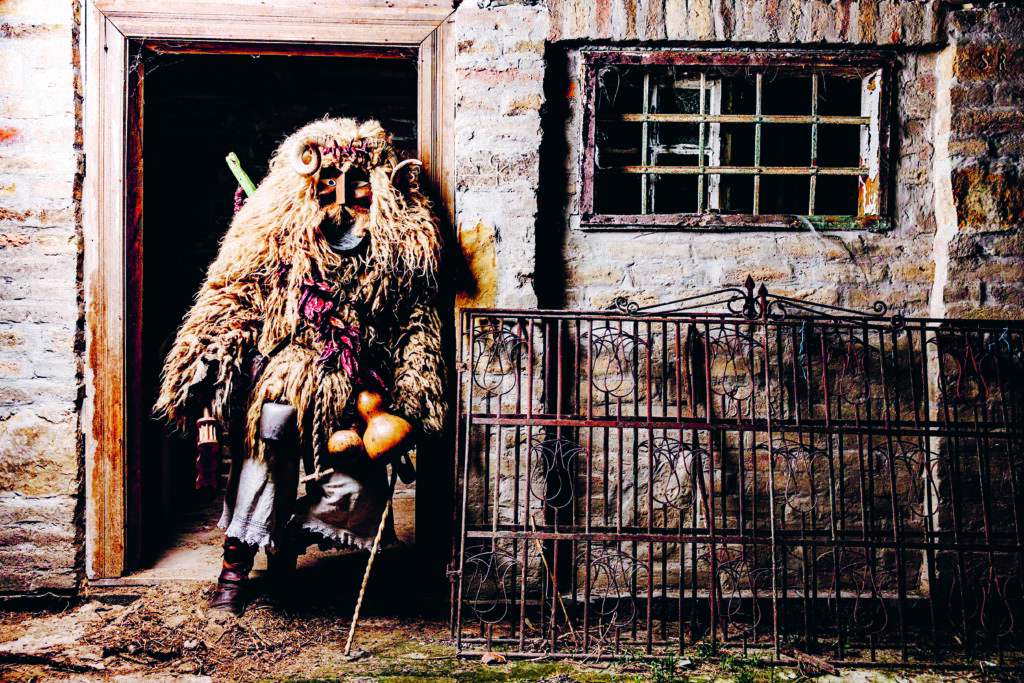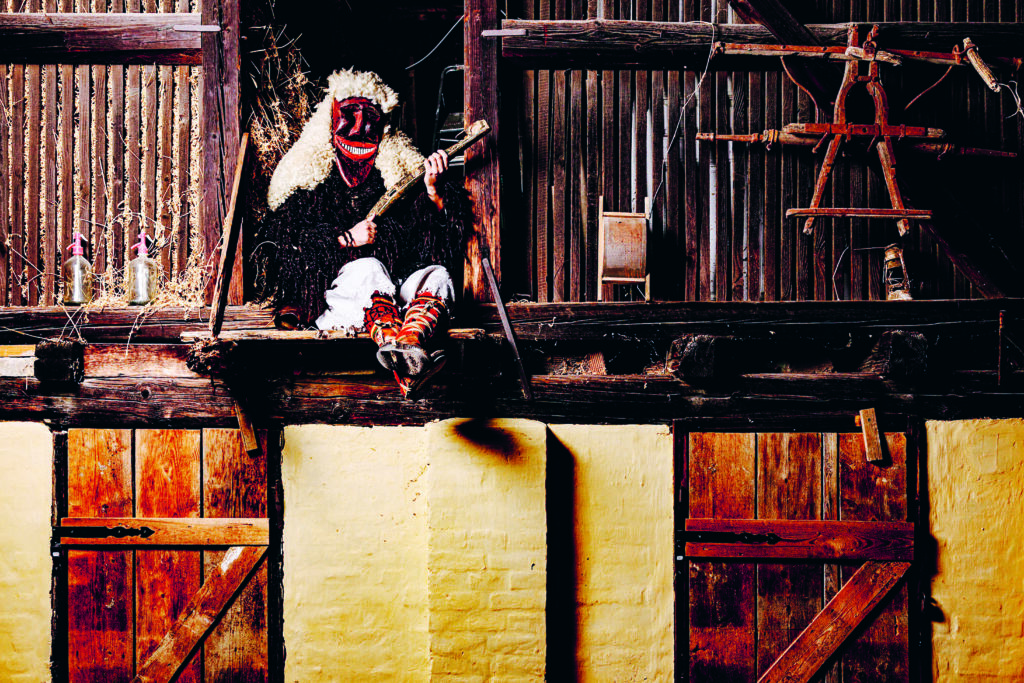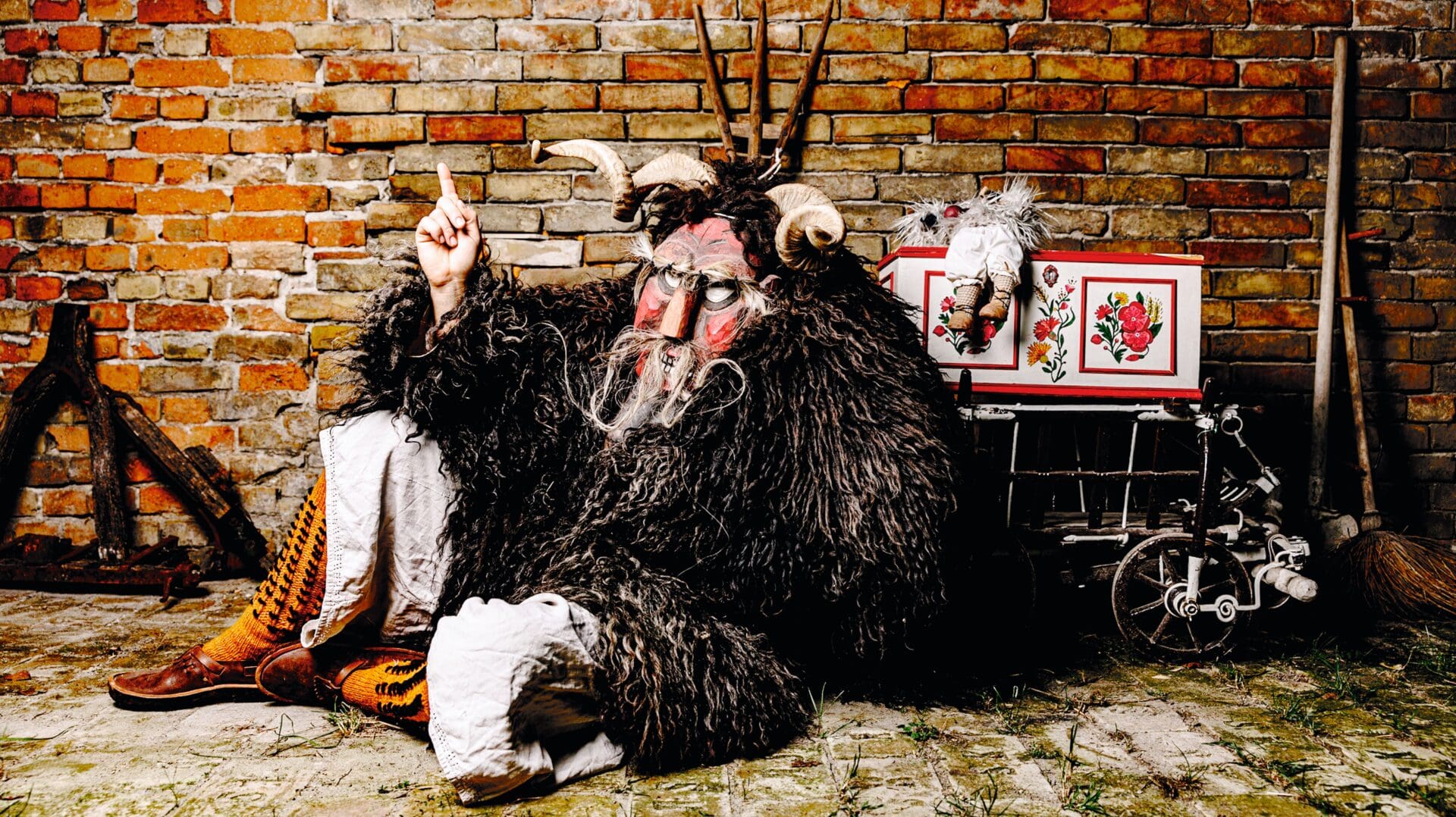The following is an article written by Zita Meszleny, originally published in Magyar Krónika.
A real busó doesn’t take off his mask. But in fact, it doesn’t really matter who is behind the costume. The Busójárás (the ‘Walk of the Busós’), or Busó Festival, held between 8 and 13 February this year, is not a costume parade, but a poklade, meaning ‘real transformation’ in Croatian. Although this year’s Busójárás is just about over, it is worth reading Magyar Krónika’s report about four masks, four characters, and four different stories, linked forever by the same city and passion.
One Cannot Help but Participate
I was sort of born into the busó life. My godfather carves masks—he learned it from an old master, one of the greatest in Mohács. My dad is a busó, too, and next year it will be twenty years since I became one. I was three years old when I got my first tiny mask, made by my uncle, and I’ve been a busó ever since. In two decades, I haven’t missed a single festival. Anyone who is from Mohács, who lives in this community, cannot help but participate. You have to be there.
We prepare for it all year round. If we get together with friends and someone slips the word ‘Busójárás’ into the conversation, it’s guaranteed to be the only topic for hours. I don’t think there’s another tradition in the world that people can talk and argue about so much. When the rain taps on the eaves, whether it’s spring or autumn, we’re all immediately caught up in nostalgia and say to each other: ‘Listen, it sounds like the busós’ cowbell’. In the summer, the brainstorming about what to do, whether we need new games, masks, or accessories, is already intensively underway.
I also collect old masks—I have about forty of them in my room. For me, a busó is a real busó only if he is as traditional as possible: if his original knobby or embroidered Šokac stockings from Sárköz, his lacy trousers, his fur coat, his cowbell, his clapper, and his mask are truly old. My tongueless sandal is more than 50 years old, and my mask was made in the early eighties by master Mátyás Kalkán. I even have a mask that is a hundred years old. I usually go to fairs and antique shops, visit old Šokac people, and search for the hidden corners of the internet for real treasures. By the way, old costumes also mean prestige. Moreover, a busó is only authentic if he does not reveal his real identity and if you cannot guess who is behind his mask, which is why I change my costume every year, and also because
the poklade and the Carnival period are about renewal and transformation.
And for those few days, I’m a busó and nothing else.
I wouldn’t give this sense of life, freedom, and deviation from routine for anything. It’s one of the best things here in Mohács. It is a bigger holiday for me than Christmas; in fact, I look forward to Christmas because I know that it means that the Busójárás is so close. I’m a fanatic, I’m obsessed, but it’s fine the way it is.

A Decent Busó Sometimes Pushes the Limits, But Knows the Boundaries
My great-grandfather is the first person in our family chronicles to be a busó. He wore a unique mask. Back in those days, all the peasants made their costumes from what they had: if they kept sheep, they put a ram’s horn on the mask, if they kept cows, a bull’s horn. Since my grandfather was a hunter, he wore a deer antler.
His son also made a mask with a deer antler on it—I found it myself. Once, recalling his youth, he mentioned his mask, and when I asked him where it was now, he said it was in the attic. I, of course, climbed up immediately. It was evening, the full moon was shining through the small window, and dust covered everything, but I saw the mask immediately—it was like in a novel. I took it to the light and saw that it was quite worn, its hood eaten by moths, but I didn’t mind. I took it to Gábor Baráth, a mask carver, and he fixed it up. Since then, I’ve worn it at almost every Busójárás, which is a joke to the others now, but I’m very attached to that piece because of the family line. I wear folk dancing boots with it, rent a fur, and hold a bullhorn in my hand.
There is some kind of power in the mask to do things you wouldn’t dare to do otherwise. However, this freedom has to be handled with care, and not everyone feels the limits. The busó society is made up of people, and people, like everywhere, are diverse. Just as you cannot tell what a Hungarian driver is like—as some are clumsy, some obey the rules, some speed, some swear—, you cannot tell what a busó is like. Some respect the customs and the others, and some wear trainers with their fur. A busó is like a man.
It’s up to the individual what he does with the opportunity and freedom the mask offers.
I think that what makes this event truly valuable is temperance. Although it’s wonderful to have a festival every year and that those three days are all about the busós, it’s lucky that it only happens once a year. We need these frameworks, and a decent busó, though sometimes pushing the limits, always knows the boundaries and the culture that has created them. Me and my friends are careful to be authentic, and always come up with something new to fit in with the past, because it’s a living tradition. It is a fire in us that we try to keep, nurture, and pass on.

The Balance between Tourism and Tradition
At first, I was not a busó, but a jankele, another typical figure of the Busójárás, dressed in rags and sacks. Later I not only became a busó, but I have also been making masks since I was twelve. My brother and I used to fight over who would wear the only mask in the family—I got fed up with that and started carving one for myself. I learned the craft self-taught; I saw how masks were made in photo series and tried to follow it. Then, once I had the moves, I slowly developed my own style. I have bags of masks—one of my favourites is the ‘blind’ one. A couple of years ago, I went to the festival with a guide goat, and I built a little frame story around it—that’s why I needed a special mask, which funnily enough I can see better in than the plain kind. The masks of today are much bigger than the old ones, which gives the makers more freedom, but what I create is always based on tradition. This is particularly important for me.
I believe that it is best for the Busójárás if there is a healthy balance between tourism and tradition. If it shifts to one side or the other, you can feel it immediately if you have been part of the Carnival for decades. At the moment I feel that the busó community must be encouraged to tip the scales rather towards tradition. However, it’s not that easy as about two thousand people are dressing up as busós every year, and the festival does not mean the same thing to everyone. There is, for example, doorknocking, a tradition which we should definitely keep alive. It’s a time when the busós go from house to house, swamping good wishes on the residents, who in return host them. It gives the heart of the poklade, the sense of belonging necessary for authenticity. Tourists see only a small part of this, and it’s another question of how much of it should be shown at all. What is certain, however, is that we must address these issues and treat respect the legacy we have inherited from our forebears with respect.
A Busó without a Mask Is Just a Clown
Even though none of my immediate family members was a busó, I always watched the old men dressing up and had a great desire to be one of them. Then my cousin took me to the Busójárás when I was nine, and I haven’t missed one since. Moreover, I even carved masks over ten years ago because I wondered what it would be like to wear a piece I made myself, like the old ones. I don’t change the mask every year, but I always come up with something new, an old haversack, a string of peppers, or something else.
Unfortunately, there are fewer and fewer of us who really try to keep the old charm of the festival. For example, a person who takes off his mask is not one of us, because one of the reasons for the costume is to make sure that no one knows who is behind it.
When we put on the costume and the mask, we are busós, not men.
A busó without a mask, even if he is wearing a cowbell, traditional trousers, or a haversack, is not a real busó, but a clown showing himself off to tourists. Of course, you sweat, your head hurts, your feet hurt, and it’s getting harder and harder to hold on to these things when many people treat us only as a tourist attraction, but for us, it’s not. For us, it means something completely different. It is part of our lives. In fact, it is a central part of it. A constant topic of our everyday conversations. Every hour of every year is a story that could be told for days. Fortunately, we can keep this family feeling to ourselves, we can organize our days in such a way that we can keep the Carnival to ourselves and avoid the hustle and bustle.
But there is never a pre-arranged scenario, as with the official busó groups. What we cook in which courtyard, whose house we go to, where we start to play music—all happens spontaneously. We feel like it’s going to work out however it works out, and there is always a way. We never know what will happen, but what can happen, will happen. Then suddenly the celebration is gone, and life becomes dull. The only thing that lifts us then is to get together and talk about what happened and how. This is something that people who are not from Mohács cannot fully understand. Being a busó is not just a hobby, it is a way of life. It’s a tradition that I can only be part of because I am from Mohács, and for which I will always be grateful. It gives meaning to my life. Not only do I get up, go to work, and then go to bed at night, but I have these adventures in my life that I can tell my grandchildren about.

Related articles:
Click here to read the original article.








